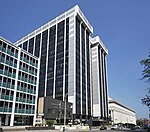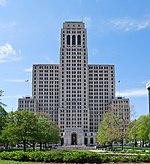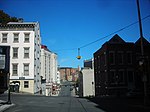Dr. Hun Houses

The Dr. Hun Houses were located on Washington Avenue (New York State Route 5) on the western edge of central Albany, New York, United States. They were a pair of brick buildings constructed a century apart, the older one around 1830, in the Federal style. In 1972, three months after they were listed on the National Register of Historic Places, they were demolished and subsequently delisted.The older house was considered one of the finest Federal homes in the city. Its architect is unknown, although it has been speculated to be Philip Hooker. It was likely built for John F. Bacon, a lawyer and clerk of the State Senate, who may only have lived there for a year and eventually sold it to another lawyer. Near the end of the 19th century it was acquired by Dr. Henry Hun, who adapted the house for his practice and built a smaller, architecturally sympathetic house toward the rear of the property as a residence.
Excerpt from the Wikipedia article Dr. Hun Houses (License: CC BY-SA 3.0, Authors, Images).Dr. Hun Houses
Washington Avenue, City of Albany
Geographical coordinates (GPS) Address Nearby Places Show on map
Geographical coordinates (GPS)
| Latitude | Longitude |
|---|---|
| N 42.655833333333 ° | E -73.761388888889 ° |
Address
Civil Service Employees Association (CSEA)
Washington Avenue
12203 City of Albany
New York, United States
Open on Google Maps











